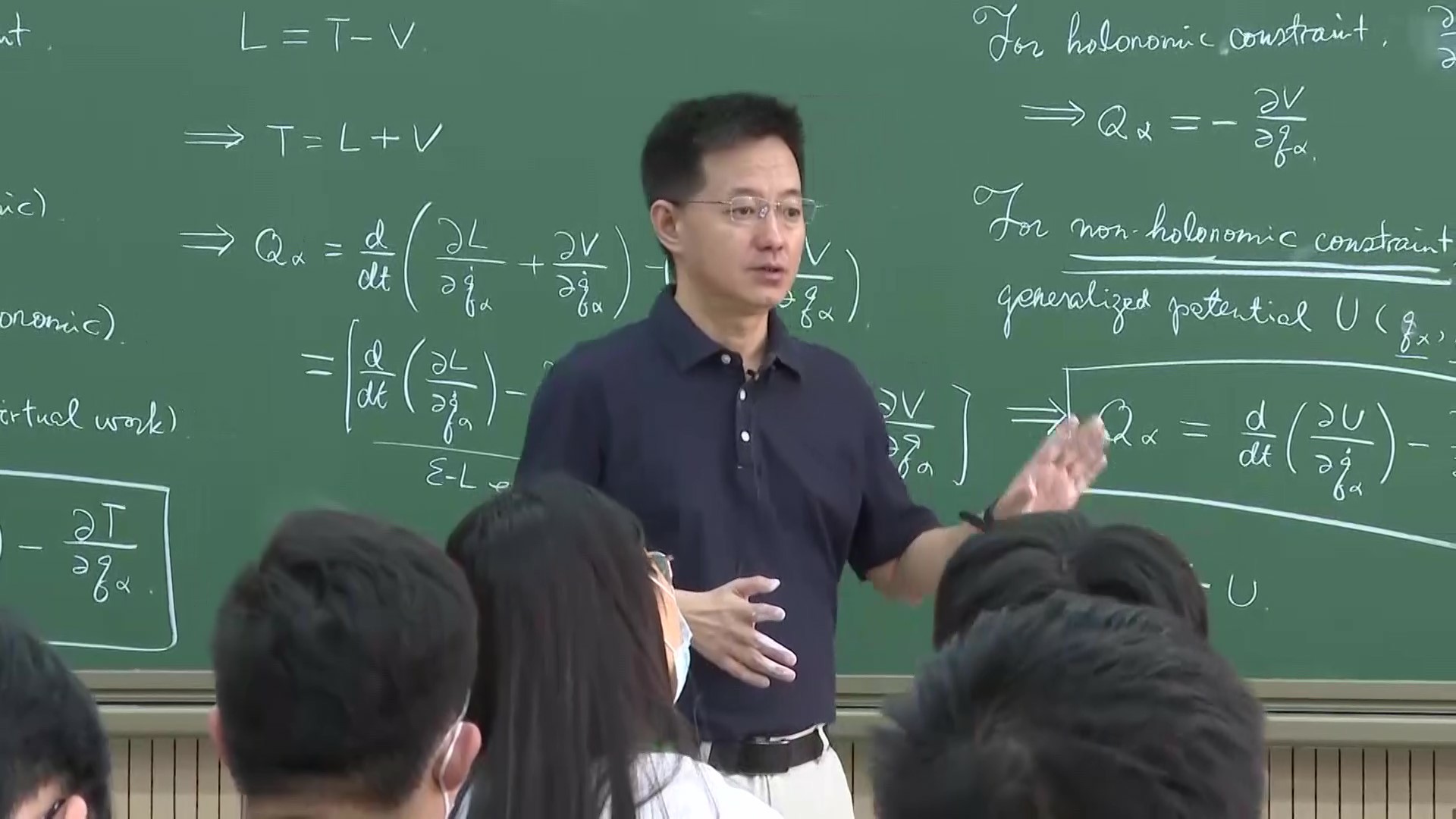本课程主要包含两大专题——量子力学基础专题、量子力学高级专题。其中,基础专题共四章内容。第一章介绍量子力学基本假设及 Hilbert 空间,包括:量子力学基本假设总览、Hilbert空间及其中的态矢量和算符、算符基本运算性质、算符本征值、线性/反线性变换的算符表示、具有几类重要性质的算符、力学量算符与量子测量、量子力学第 1-2-3 条基本假设、相容力学量及可对易力学量完全集,等。第二章介绍量子动力学基础及简单变换,包括:量子力学第 4 条基本假设、时间演化算符与图像变换、Ehrenfest 定理,时间、空间平移与空间反演,等。第三章介绍量子力学简单应用,包括:广义不确定性原理、一维能量本征值、一维线性谐振子、中心力场问题、电磁场中带电粒子的运动,等。第四章介绍量子力学中的近似方法,包括:定态微扰论、中心力场势散射问题、Ritz 变分法、WKB 理论及其应用,等。高级专题共四章内容。第五章介绍量子力学中的群论与对称性,包括:Wigner 定理、群论基础、连续型幺正变换群、分立型幺正变换群、分立型反幺正变换群、对称性与简并度,等。第六章介绍量子力学中的角动量理论,包括:角动量本征值问题的代数方法、角动量的矩阵表示、三维Euclidean 空间与 Hilbert 空间中的旋转、Wigner-D 矩阵、角动量耦合及 Wigner 3j-,6j-符号及 Wigner-Eckart 定理及其应用,等。第七章介绍电磁场与原子相互作用,包括:Klein-Gordon 方程、Dirac 方程等相对论量子力学初步、弱相对论近似下推出的 Pauli 方程、Zeeman 效应与 Stark 效应、氢原子的精细结构与超精细结构,等。第八章介绍全同粒子与二次量子化初步,包括:全同粒子、量子力学第 5 条基本假设、二次量子化基础及其应用,等。
英文介绍:Advanced Quantum Mechanics includes two primary parts, covering the fundamental and advanced topics in quantum mechanics. Part one consists of four chapters on basic topics. Chapter 1 introduces the basics of quantum mechanics, including the fundamental postulates, the definition and properties of Hilbert space, state vector, frequently used operators and their eigenvalues, linear and anti-linear operators for transformations, projection operators and quantum measurement, compatible observable and complete set of commuting operators (CSCO) and of good quantum numbers. Chapter 2 is a preliminary of dynamics and simple transformations in quantum mechanics, including the fourth fundamental postulate of quantum mechanics, the time evolution operator and transformation among the three pictures (Schrödinger, Heisenberg, and Dirac interaction pictures), the Ehrenfest theorem, and three symmetry transformations (space/time translation and parity). Chapter 3 shows some fundamental applications of quantum mechanics, including the generalized uncertainty principle, the one-dimensional stationary Schrödinger equation (eigenvalue of Hamiltonian) problems (well/barrier, harmonic oscillator, and central potential problems, such as the hydrogen atom), and some preliminaries of the interaction of charged particles with electromagnetic field. Chapter 4 introduces several approximation theories in quantum mechanics, including the non-degenerate/degenerate perturbation theory, the central potential scattering, the variational theory, and WKB theory, together with their applications. Part two consists of four chapters on advanced topics. Chapter 5 is a brief introduction of fundamental discrete/continuous symmetry group involved in quantum mechanics, together with some basics of group/representation theory, including Wigner's theorem (for linear unitary and anti-linear anti-unitary transformations), Lie group/algebra and its generators/Casmir operators, basics of group theory, symmetry-conservation relations and the degree of degeneracy involved therein. Chapter 6 introduces the theory of rotation and angular momentum, which includes the algebraic method for solving the eigenvalue problems of angular momentum, the matrix representation of angular momentum, the rotations in Euclidean/Hilbert space, Wigner-D and -d matrices, the addition of angular momentum, the 3j- and 6j- symbols, and Wigner-Eckart theorem/projection theorem and applications. Chapter 7 introduces the theory of the interactions of electromagnetic fields and atoms, including some basics of relativistic quantum mechanics, e.g., Klein-Gordon’s equation and Dirac’s equation and its approximated version under weak relativistic condition, i.e., Pauli’s equation, Zeeman/Stark effects, fine/hyperfine structures of hydrogen atom, etc. Chapter 8 is a very preliminary introduction of identical particles and second quantization, including the concepts of identical particles and total symmetric/anti-symmetric states, the fifth fundamental postulate of quantum mechanics, permutation/transposition operators and transformations, and one-body/two-body operators in second quantization.







